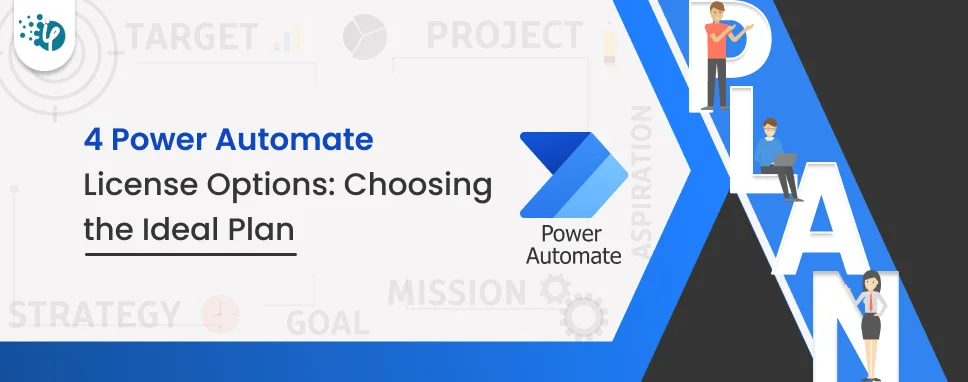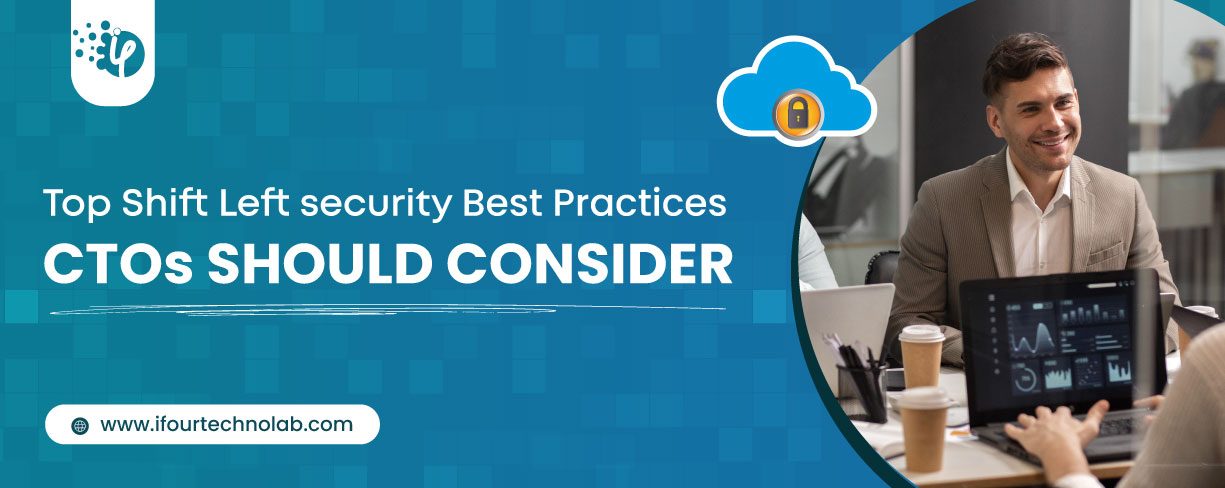Modernizing applications with the 7 R strategy – A CTO’s Guide
Think about the last time CTOs spent most of their time fixing old systems. Updates were slow, servers were expensive, and adding new features took time. Now, things have changed....
Listening is fun too.
Straighten your back and cherish with coffee - PLAY !

Power Automate is a popular RPA solution developed by Microsoft and it provides flexible licenses for business use. Because of its affordable pricing, it has been a preferred choice for a whopping 10 million active users.
With Power Automate, you can automate workflows across your business applications and manage them effortlessly all without writing a single line of code. It even allows you to initiate actions based on specific occasions or conditions.
Power Automate offers an array of licensing plans, and guess what? Even a non-technical user can automate workflows without dependency on Power Automate Consultation. Thanks to its accessibility and accelerated automation.
Different plans have different features with varying usage limits. Now the question is which Power Automate license is best for your business? This is a common dilemma, specifically among decision-makers and C-level executives.
This is what we are going to address in this blog. Let’s delve further and look at various Power Automate License Options and determine one that fits your requirements and workflow automation needs.
Let’s consider different Power Automate License types available to execute business tasks and process automation.
Power Automate Free Plan offers you a limited set of features and functions to automate your business workflows at no cost. It offers pre-built connectors that help you connect with reliable platforms such as Microsoft Office 365, SharePoint, Twitter, and others. Additionally, you get a maximum of 750 monthly flow runs to automate your recurring tasks and reduce manual labour. However, this could be challenging for those who rely on frequent automation or have plans to scale up their automation efforts over time.
Thus, it lets you focus on more strategic activities straight away saving you considerable time.
The Free Plan is perfect for Startups or SMEs having small teams looking to automate simple, repetitive tasks without incurring costs. It is an excellent way to explore the capabilities of Power Automate and understand how automation can benefit daily workflows before considering an upgrade to a paid plan.
Thus, it lets you focus on more strategic activities straight away saving you considerable time.
If you have extensive automation requirements and a desire for full access to Power Automate features, then this license type is a perfect fit for you. You can create and run an unlimited number of workflows and automated processes.
With Power Automate Per User, you can improve your productivity, fine-tune workflows, and decrease the amount of manual labour involved. This platform equips you with essential tools required for business process automation and achieves superior results.
Pros
Cons
Starts at $15.00 per user/month. Additional purchase is required If users want to integrate add-ons for unattended RPA or AI builder.
Power Automate per user pricing
Overall, Power Automate desktop license Per User gives each user the tools they need to automate tasks, work together more effectively, and get better results, allowing them to work smarter, not harder.
Power Automate Per User with attended RPA automates tasks that require human intervention by combining the capabilities of robotic process automation (RPA) with user-driven interactions. Attended RPA works together with people to do tasks better, while unattended RPA works alone. These tasks are usually boring and need decisions, so automation helps, but human interaction is important.
RPA tracks down applications in different enterprises and business capabilities.
Initial development costs for creating and customizing automation solutions can be significant, along with ongoing maintenance and support expenses. Additionally, scaling up automation efforts may require investment in infrastructure and resources to handle increased demand. Careful consideration of these factors is crucial to ensure a successful and cost-effective implementation of power automation per user with attended RPA.
Pros
Cons
Power Automate's Per Flow Plan introduces flow packs, which are predefined bundles of flows that can be purchased. Flow packs are particularly advantageous for organizations with predictable automation needs or those looking to automate standardized processes across different departments or teams. Flow packs offer a pricing plan that is easy to understand and helps CTOs control their spending on automation.
It’s also important for them to rectify if plan features align exactly with their automation needs.
Thus, Flow packs can be a cost-effective option for business process automation, however, it is crucial to ensure that they are not being wasteful with spending.
To learn more about Power Flow plans and their FAQs, click here.
Several Microsoft products come with Power Automate usage rights, allowing users to automate workflows seamlessly within these platforms. These products include:
MS Office 365: Clients can automate processes inside different Microsoft applications like SharePoint, and MS Teams. This combination enables initiatives like email notices, record endorsements, and information inside Microsoft 365.
MS 365 Dynamics: Power Automate is available within the environment of Dynamics 365. Now this makes automation possible across several applications like Sales, Customer Service, Marketing, and Finance. Here some business procedures like lead qualification, customer onboarding, and service ticket routing can be automated by users.
Microsoft SharePoint: Document-centric workflows, approval procedures, notifications, and data synchronization tasks can all be automated within SharePoint.
Workflow automation is used within Microsoft products to make processes smoother and improve efficiency across your firm.
Find price-related information for all of Power Apps plans here
Some of the aspects must be taken into consideration while selecting the proper plan for your business to ensure that it meets your requirements:
Determine if your automation needs are geared towards individuals or teams. Consider whether users will be working solo or together on tasks. This assessment will help select plans that provide the appropriate mix of individual and collaborative tools.
It is important to evaluate the complexity of the workflows that you intend to automate. Decide if your organization needs simple automation for basic tasks or advanced capabilities for more complicated processes. This assessment will help you choose a plan that can handle the level of complexity your organization requires.
Consider whether your company intends to utilize RPA (Robotic Process Automation) features alongside conventional automation capabilities. Choose a plan that includes the appropriate RPA functions to achieve your automation objectives and determine whether your workflows require attended or unattended automation. Existing Microsoft licenses
Check your organization's current Microsoft licenses and subscriptions. See if Power Automate usage is already covered in any of your existing plans, like Microsoft 365, Dynamics 365, or the Power Platform. Using these existing licenses can save money and make integrating with other Microsoft products easier.
Understanding your business needs is crucial before selecting the appropriate Power Automate license. There are four types of licenses available, each offering unique features and restrictions. For instance:
Companies with existing Microsoft licenses should leverage them, as they often include Power Automate access, reducing costs and facilitating integration with other Microsoft products.
So that's it from this blog. I hope this helps you in starting small tasks or handling complex processes. The right Power Automate license type at your end helps you meet your business needs effectively.
The Power Automate Free license is ideal for basic automation needs and individual users or small teams with straightforward requirements. If the needs are simple and you don't need advanced features, the free plan will be sufficient to use. Otherwise, you can upgrade to a paid plan to access more capabilities.
The cost of Power Automate Per User varies depending on the specific needs and requirements of your organization. Generally, it costs about $15 per user/month and includes access to Power Automate and premium connectors.
The Per Flow Plan suits organizations with varied or project-specific automation needs. It's ideal for businesses seeking cost-effective options for occasional or limited-scale automation projects without the commitment of a per-user subscription.
Yes, you can use existing Microsoft licenses, for example, Microsoft 365, Elements 365, or the Power Stage to get to use Power Automate freedoms, possibly decreasing extra expenses and rolling out connecting with other Microsoft items.
Investing in Power Automate licenses can bring notable returns by cutting down manual work, enhancing process efficiency, and expediting task completion. This leads to cost savings and heightened productivity throughout the organization. The actual return on investment varies based on factors like the complexity of workflows, the amount of automation deployed, and the efficiency improvements gained from smoother processes.

Think about the last time CTOs spent most of their time fixing old systems. Updates were slow, servers were expensive, and adding new features took time. Now, things have changed....

According to HackerOne, fixing a security issue after software is released can cost 30 times more than fixing it during development. Today, CTOs take a different approach. Shift...

A few years ago, companies built software first and thought about security later. Developers and security teams did not cooperate, and problems were fixed only after release. This activated DevSecOps vulnerabilities and many DevSecOps failures.